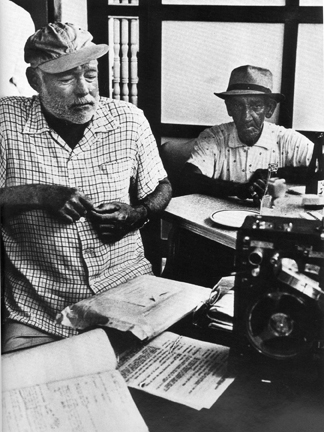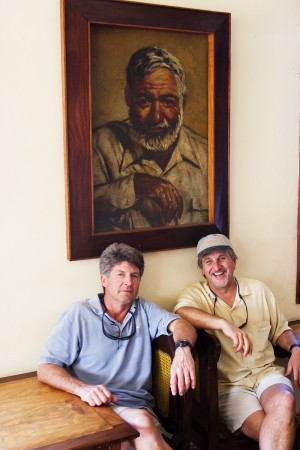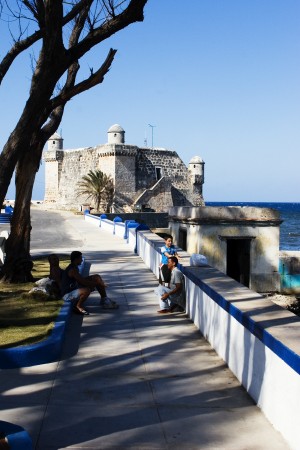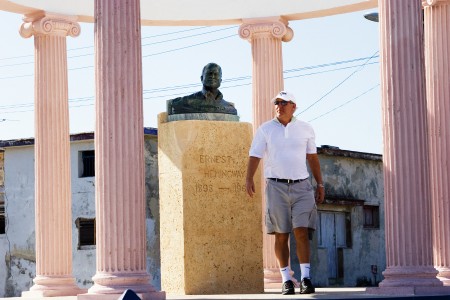“They sat on the Terrace and many of the fishermen made fun of the old man and he was not angry. Others, of the older fishermen, looked at him and were sad. But they did not show it and they spoke politely about the current and the depths they had drifted their lines at and the steady good weather and of what they had seen.”
The Terrace Hemingway wrote about in The Old Man and the Sea was La Terraza, a fisherman’s bar in the small village of Cojimar, a 20-minute taxi ride from Havana. This is where Hemingway docked his boat, Pilar, and the bar, still there, is where he spent many an afternoon drinking with fishermen like Anselmo Hernández, an old man who was “thin and gaunt with deep wrinkles in the back of his neck. The brown blotches of the benevolent skin cancer the sun brings from its reflection on the tropic sea were on his cheeks. The blotches ran well down the sides of his face and his hands had the deep-creased scars from handling heavy fish on the cords. But none of these scars were fresh. They were as old as erosions in a fishless desert.”
Hernández was the model for Santiago—the old man of the sea. The young boy in the story, Manolo, was based on the young son of the owner of La Terraza, Manolito.
I like La Terraza, even though it has turned into a bit of a tourist trap. As long as you don’t lunch there when one of the tour buses pull up and 25 or 30 sunburnt Scandinavians are directed to the long tables in the back of the restaurant where they are served blue daiquiris and arroz con mariscos, it can be quite pleasant. The Cristal is very cold and the camarones al ajillo, fat shrimp cooked simply with garlic and parsley in olive oil, are delicious.
The walls are covered in framed black-and-white photos of Hemingway in and around Cojimar or standing at one dock or another beside some monstrous marlin or a rare 82-pound “peto fish” (what we call wahoo). In the bar is a nice oil painting of Hemingway that looks to be roughly modeled on the famous 1957 portrait taken by Yousuf Karsh (the story goes that when Karsh went to shoot Hemingway at Finca Vigía, he wanted to make Hemingway comfortable. So knowing of Hem’s reputation as a formidable drinker, when Papa asked him what he wanted to drink—this was at 9 o’clock in the morning—Karsh answered: “Daiquiri, sir.” “Good god, Karsh,” Hemingway remonstrated, “at this hour of the day?”) Everyone likes to sit at the little wooden table beneath this portrait and have their photo taken.
After lunch you can walk along the Cojimar waterfront where a small stone fort, built in 1645, once led to the wharf where Hemingway kept the Pilar tied up. Apparently last year’s hurricanes destroyed most of the wharf. A few stone piers rising above the water are all that are left.
Opposite the fort is a small plaza named after Hemingway with a monument featuring a bronze bust of the author. It’s a reproduction of a larger Hemingway statue leaning against the bar in El Floridita. They say that after Hemingway died, the fisherman of the village wanted to build this bronze bust but couldn’t afford it. Instead, they collected old anchors, props, and tools until they had enough metal for the casting. I don’t know if this story is true or not but the idea that an old anchor or two went into making Papa’s bust here in Cojimar, where he conceived of the idea for The Old Man and the Sea, just feels right to me.
Tags: Cojimar, Cuba, Havana, La Terraza
Comments are now closed.





1 comment